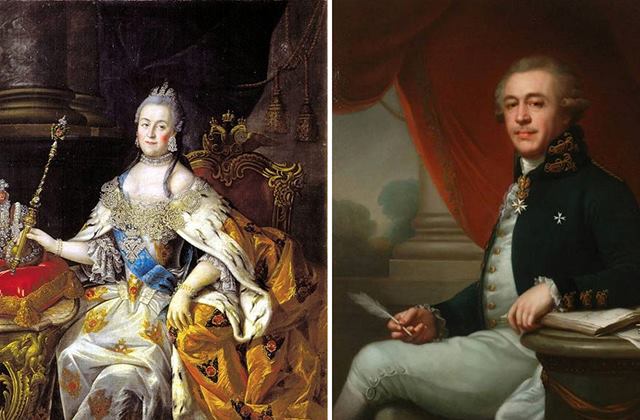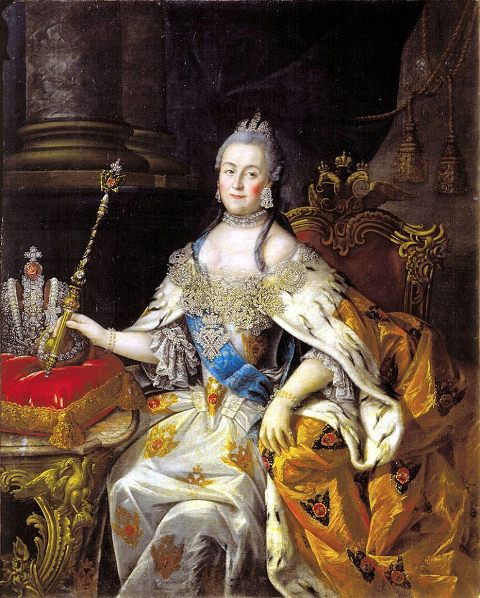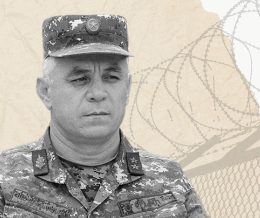
Armenian Track of Imperial Diamond

One of the world’s most precious diamonds, which is named after Russian Prince Orlov and weighs 40 grams (194.5 carats) decorated the scepter of Empress Yekaterina II. However, not many people know that the precious stone, one of the symbols of Russia’s sovereignty, has Armenian “origin.” This curious and a bit mysterious story generated in the summer of 1767, when a ship loaded with sugar casted an anchor at Persian Enzel port.
The Armenian merchant, who got off the ship was from Julfa, and had just concluded a big and profitable deal with the English, was content with his earning and was thinking of how to manage the extra money. And probably, his life would have had another continuation, if at that very moment…
From this moment the story obtains miscellaneous branching. According to one of the versions, the merchant, whose name was Grigor Safrasov (Khojaminasov), meets an Afghan sldier and the latter offers him to buy his valuable items, which were treasures looted from Nader Shah.
According to another version Safrasov personally was in the Shah’s palace, where they were getting ready for a military invasion and there was lack of funds. That’s why they offer to buy a greenish-blue Indian diamond, as big as dove’s egg.
In any case, from the very first moment the Armenian merchant is being captivated with its appearance and immediately buys it. However, it was one thing to own one of the wonderful treasures of the world, and another thing to care for its protection, as existence of the diamond would already turn it into a target for plunderers. That time Safrasov decides to move the stone as far as possible. He secretly takes it to Amsterdam and keeps it in one of the banks. And now he could think of searching a buyer for it.

From preferred buyers, first and foremost, Safrasov was observing royal houses of European countries, perfectly realizing that only they will pay his anticipated amount. However, the Europeans didn’t meet his expectations.
For about 5 years—until 1767, the diamond was kept in the bank in Amsterdam, until another Armenian, Hovhannes Lazaryan stretched a helping hand to the Armenian merchant. Millionaire Lazaryan, who was head of Trade Company of Saint Petersburg, would later on be appointed as manager of Russian Imperial bank, not accidentally decided to act as a mediator. Firstly, these two prominent Armenians were relatives. Then, businessman Lazaryan, being rather prudent, was anticipating to provide a rather respectable benefit for himself (by the way, Lazaryan bought the stone for 120 thousand rubles, and sold with 400 thousand rubles, at the same time, being awarded numerous awards and titles).
Sources again provide contradicting information on further development of the events. Not to get lost in them, let’s give preference to a three volume work elucidated in 1838 in Moscow, which included miscellaneous legal and state documents referring to the history of Armenian people, as well as separate episodes linked to famous Armenian personalities.
The following is written on Page 301 Volume 2 of that collection, “In the period of enthronement of Queen Yekaterina II a rich Armenian comes to St.Petersburg from Astrakhan, Grigor Safrasov (Khojaminasov), who during his journey to different countries of the world purchased a diamond of extraordinary volume and glitter, which was priceless by its size and high qualities. Through Prince Grigori Grigorevich Orlov he showed this stone to the Empress. Her Majesty ordered to know the price for the diamond. However, when Safrasov said he couldn’t say the price and was leaving it to the will of the Empress. That time Yekaterina, not wishing to define the price, said, that diamond was among the most precious ones, meanwhile funds are necessary for other state needs.”

Hovhannes Lazaryan
After hearing the reply Safrasov decides to leave for abroad to sell it there, however, prior to that he prefers to offer it to Prince Orlov as well. Favorite of the Empress is being informed through Lazari Lazarev on final price of the diamond and agrees to purchase the stone from the Armenian merchant for 400 thousand rubles.
The same source writes, “On the first day of Easter Prince Orlov gave that stone to Her Majesty, in a box, which was shaped like a porcelain egg. That surprised the Empress. She ordered that the amount was paid from state treasury, and granted Safrasov the title of advisor of the Commerce. That precious diamond was put and is until now on the scepter of the Empress.”
By the way the witnesses tell, how big admiration of the Empress was. The latter even ordered to exhibit the stone in the palace for a few days, and then Italian master Borgio was invited, who processed the diamond to place it on the scepter. However, it’s worth stating, not everybody agrees with this version, for instance, Russian traveller, naturalist, academician Peter Simon Pallas, in his memory book published in 1801 writes, “During the days I lived in Astrakhan, I got acquainted with an Armenian, who was then heir of Grigori Safras…his story of that diamond so differs from other similar stories, that I, probably, can please my readers, as by this, lots of edifice may be denied.”

Empress Yekaterina with brilliant scepter
This happens with legends as well. Everybody has his/her story. However, it’s irrefutable that today one of the most precious diamonds of the world, kept in Russia’s Diamond Fund has Armenian tracks edifies on centuries-old traditions of the fame of the Armenian businessman.
Hovik Charkhchyan























